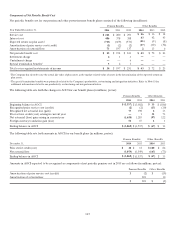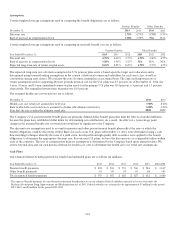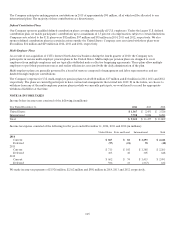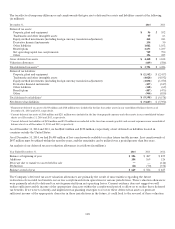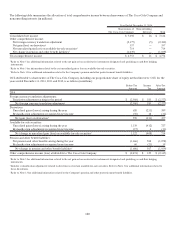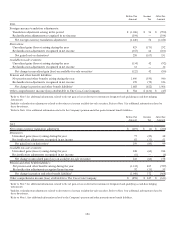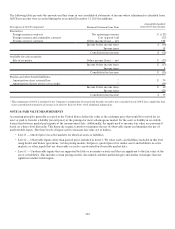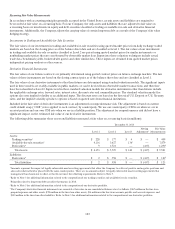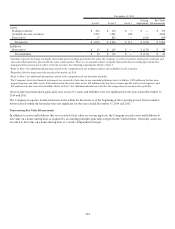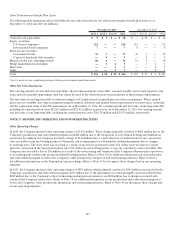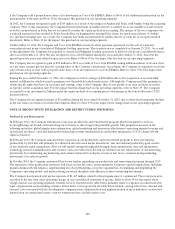Coca Cola 2014 Annual Report Download - page 124
Download and view the complete annual report
Please find page 124 of the 2014 Coca Cola annual report below. You can navigate through the pages in the report by either clicking on the pages listed below, or by using the keyword search tool below to find specific information within the annual report.
122
The following table presents the amounts and line items in our consolidated statements of income where adjustments reclassified from
AOCI into income were recorded during the year ended December 31, 2014 (in millions):
Description of AOCI
Component
Financial Statement Line Item
Amount Reclassified
from
AOCI into
Income
Derivatives:
Foreign currency
contracts
Net operating
revenues
$
(121)
Foreign currency and commodity contracts Cost of goods sold (37
)
Foreign currency contracts
Other income (loss) — net
108
Income before income
taxes
$
(50)
Income
taxes
18
Consolidated net
income
$
(32)
Available-for-sale securities:
Sale of
securities
Other income (loss) — net
$
(17)
Income before income
taxes
$
(17)
Income
taxes
4
Consolidated net
income
$
(13)
Pension and other benefit
liabilities:
Amortization of net actuarial loss * $ 79
Amortization of prior service cost
(credit)
* (19
)
Income before income
taxes
$
60
Income
taxes
(21
)
Consolidated net
income
$
39
* This component of AOCI is included in the Company’s computation of net periodic benefit cost and is not reclassified out of AOCI into a single line item
in our consolidated statements of income in its entirety. Refer to Note 13 for additional information.
NOTE 16: FAIR VALUE MEASUREMENTS
Accounting principles generally accepted in the United States define fair value as the exchange price that would be received for an
asset or paid to transfer a liability (an exit price) in the principal or most advantageous market for the asset or liability in an orderly
transaction between market participants at the measurement date. Additionally, the inputs used to measure fair value are prioritized
based on a three-level hierarchy. This hierarchy requires entities to maximize the use of observable inputs and minimize the use of
unobservable inputs. The three levels of inputs used to measure fair value are as follows:
• Level 1 — Quoted prices in active markets for identical assets or liabilities.
• Level 2 — Observable inputs other than quoted prices included in Level 1. We value assets and liabilities included in this level
using dealer and broker quotations, certain pricing models, bid prices, quoted prices for similar assets and liabilities in active
markets, or other inputs that are observable or can be corroborated by observable market data.
• Level 3 — Unobservable inputs that are supported by little or no market activity and that are significant to the fair value of the
assets or liabilities. This includes certain pricing models, discounted cash flow methodologies and similar techniques that use
significant unobservable inputs.



